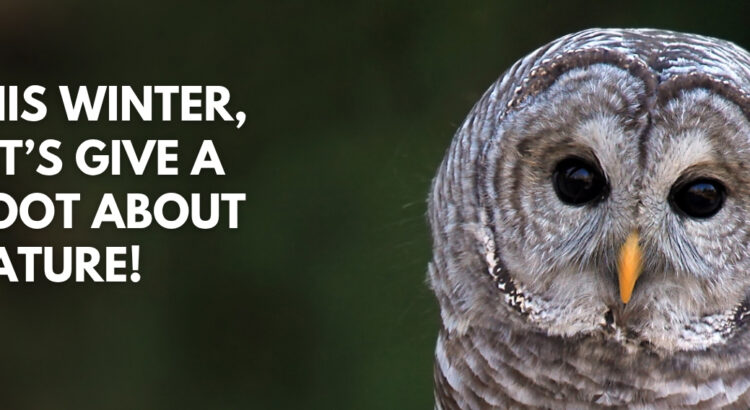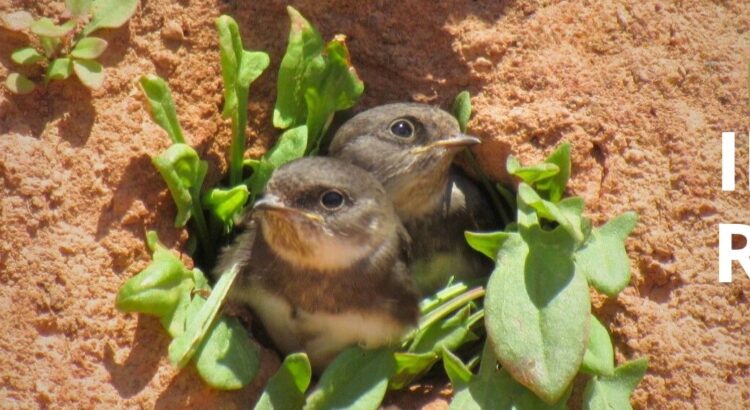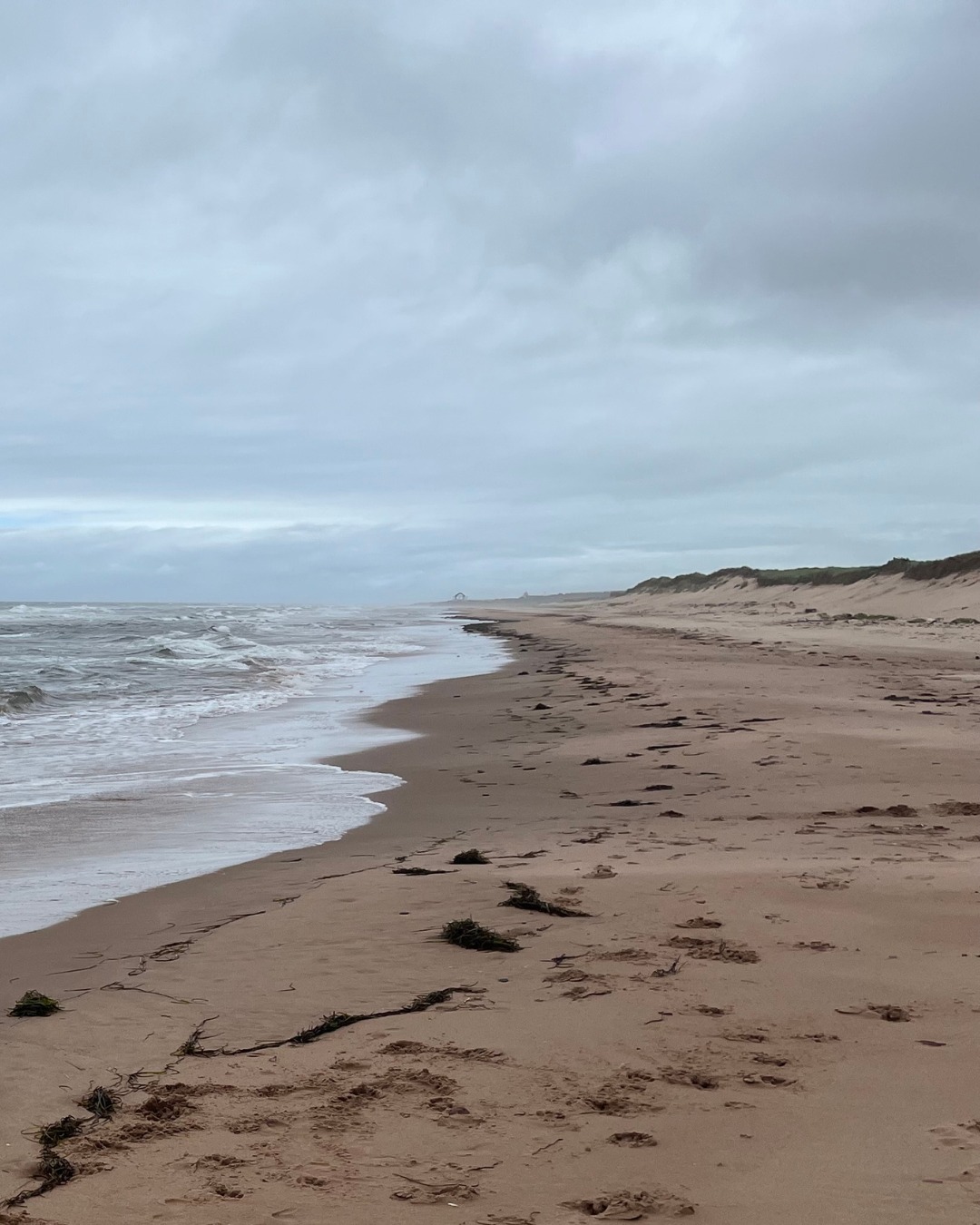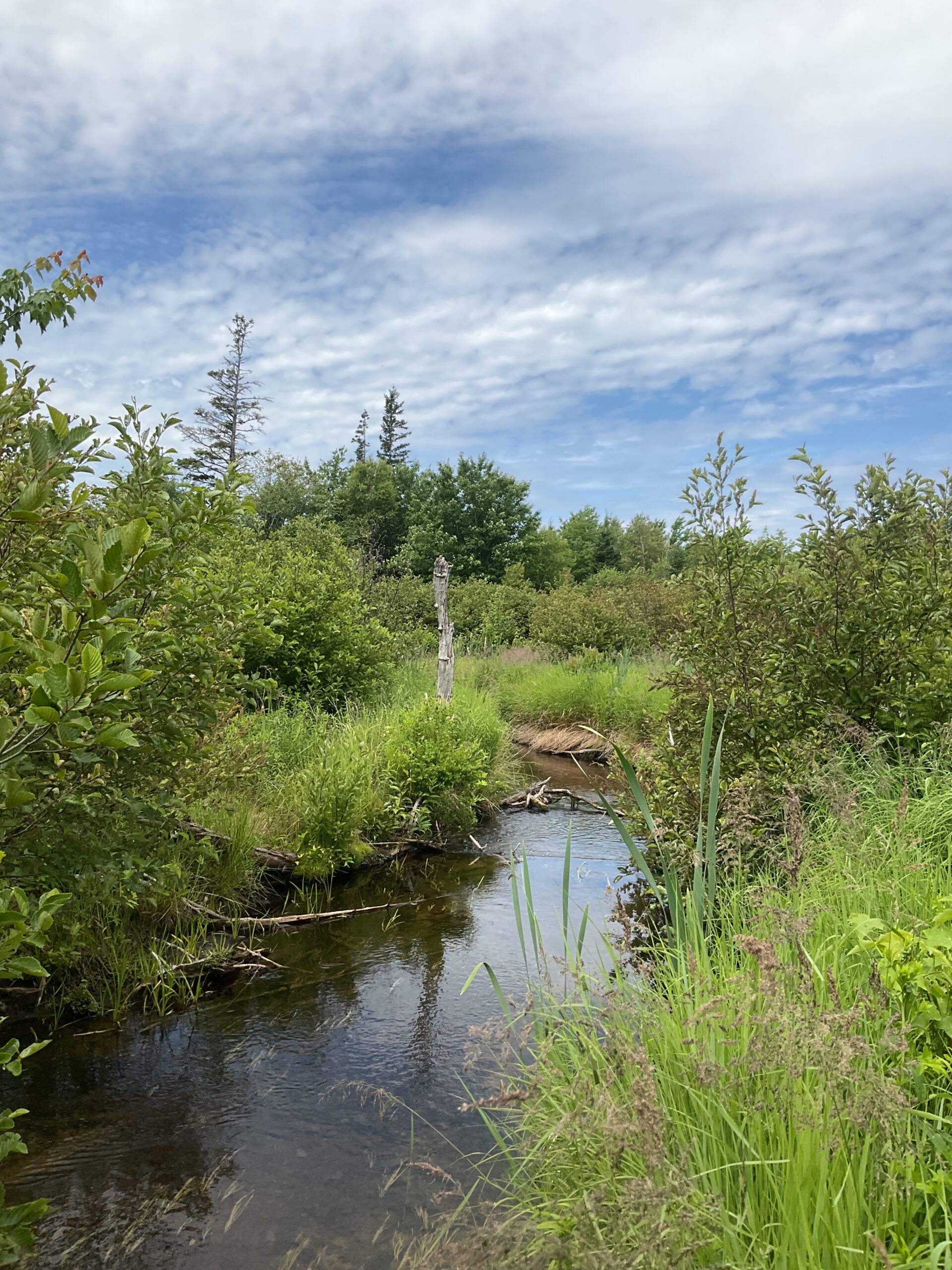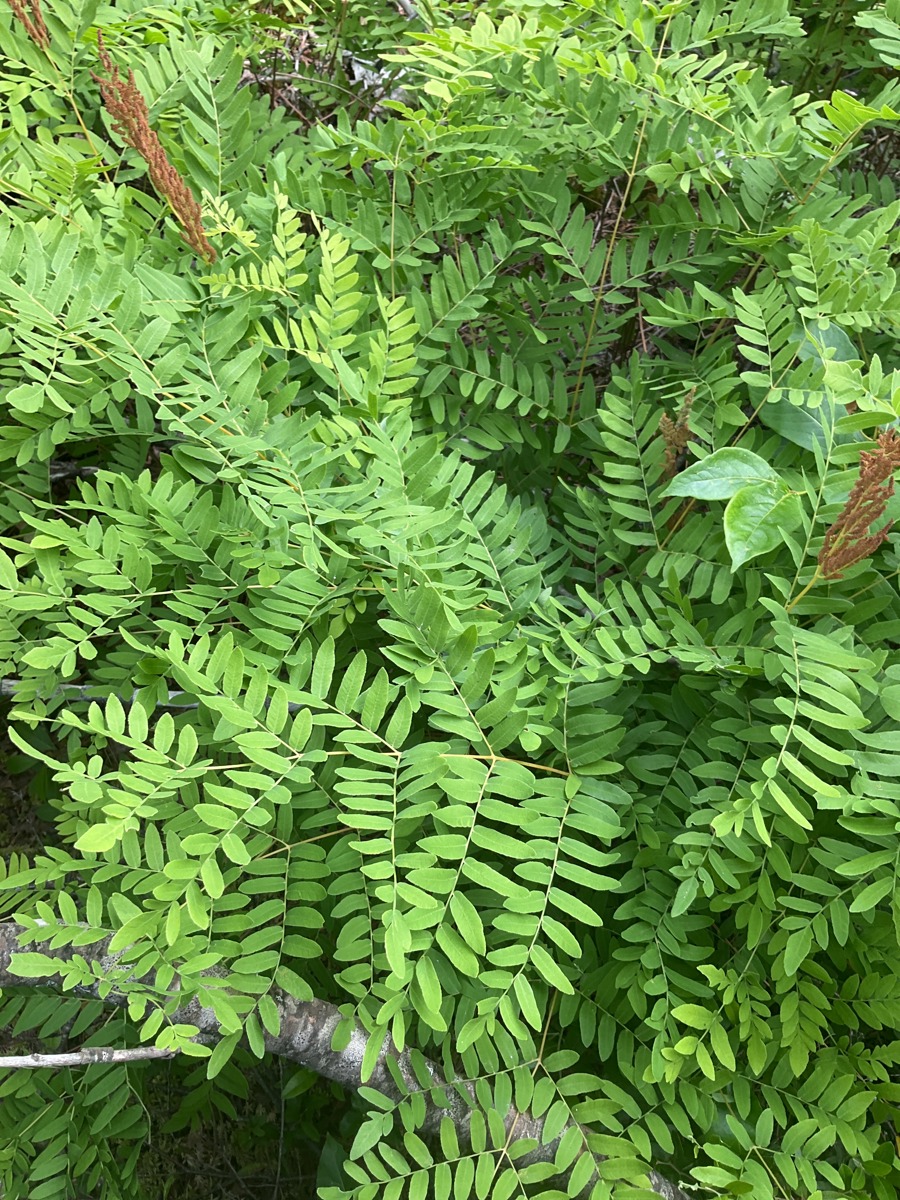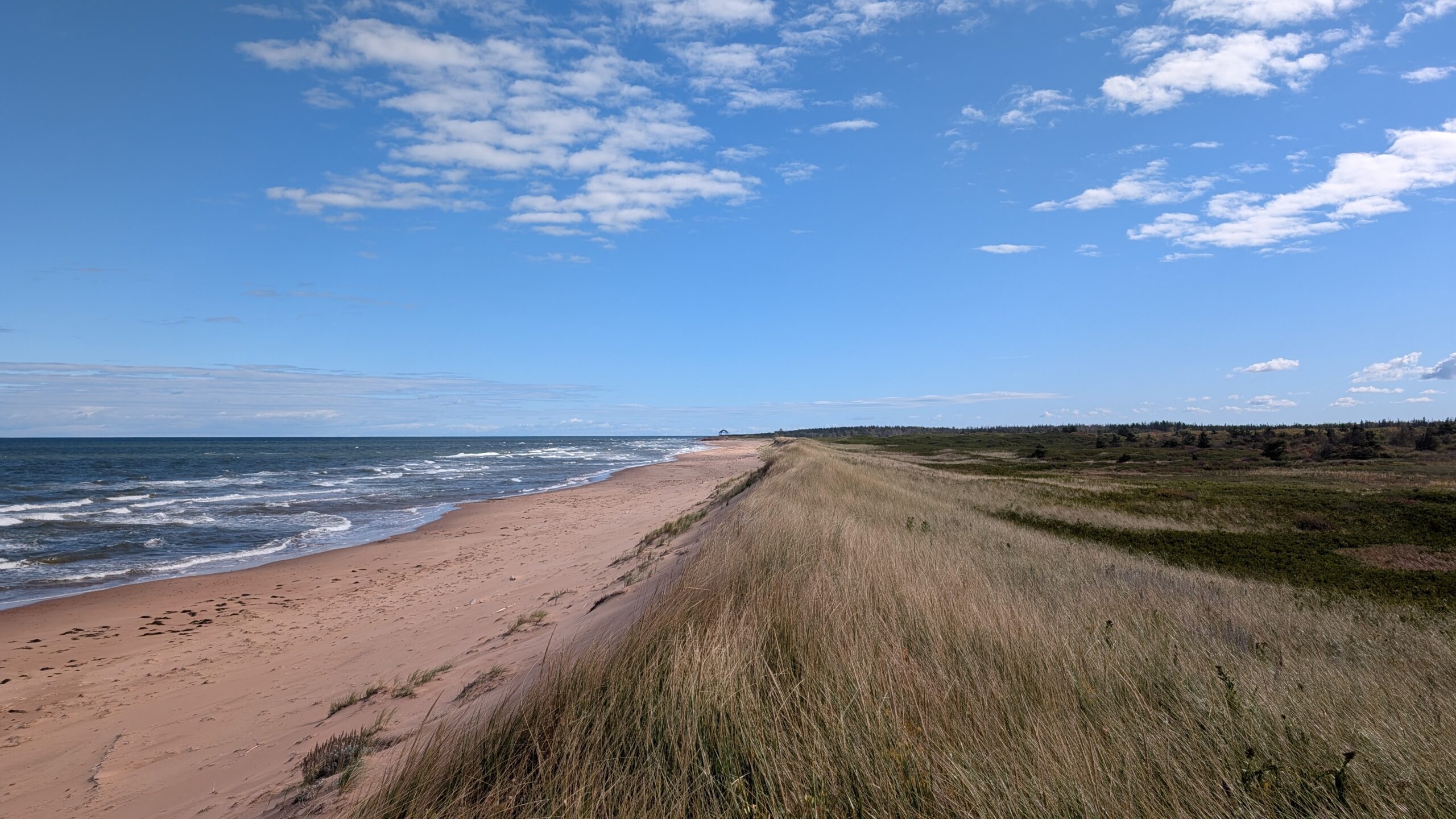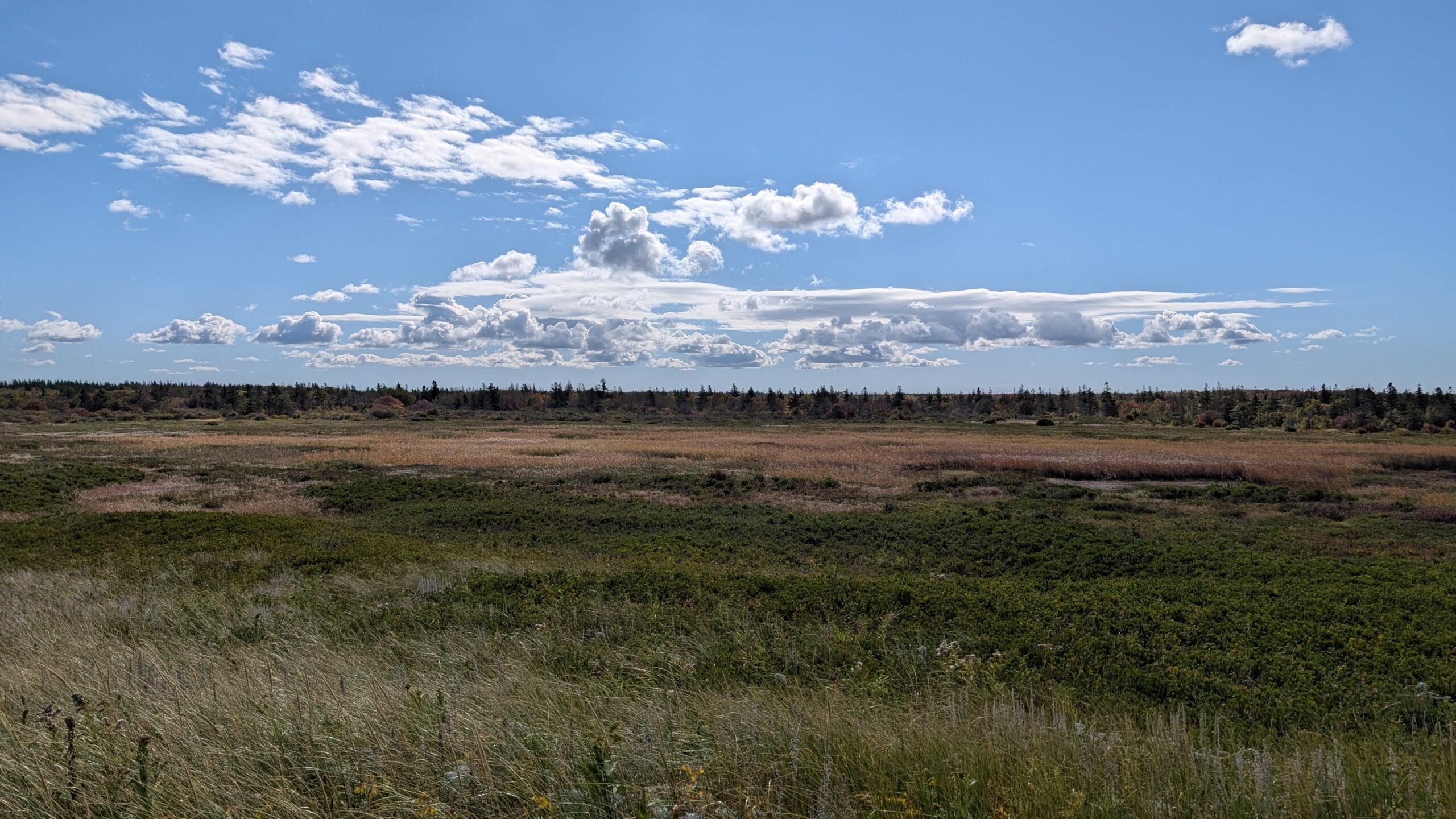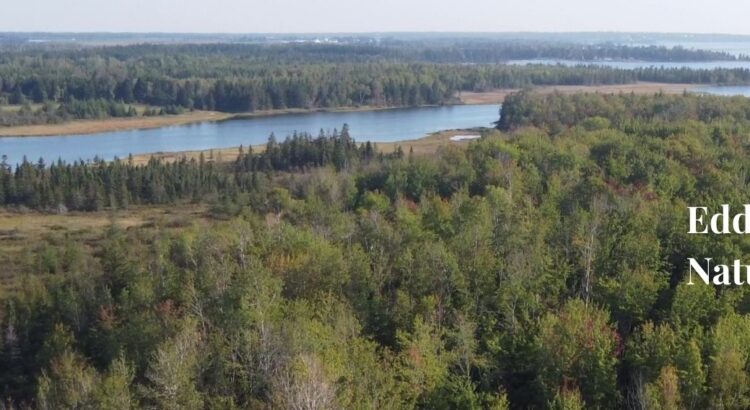Author:
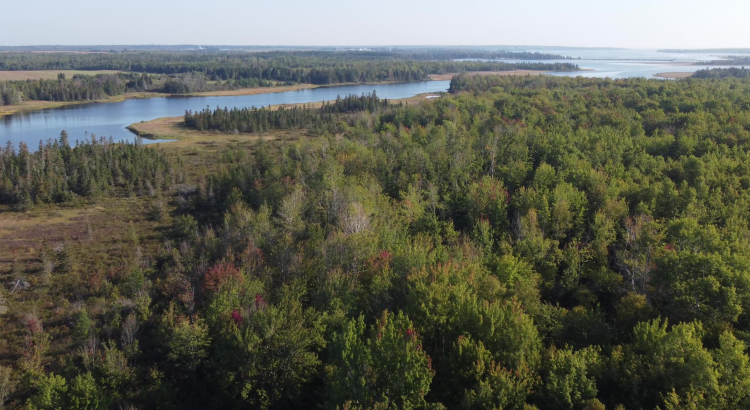
McNeill Family Donates Land to Honor Parents and Their Family Legacy
The McNeill family of Days Corner, PE, has made a generous 80 acre donation of land on the Ellis River. This property, which lies just outside of Wellington, is an ecological hotspot, with over a kilometer of coastal salt marsh and habitat for several species at risk.
Read more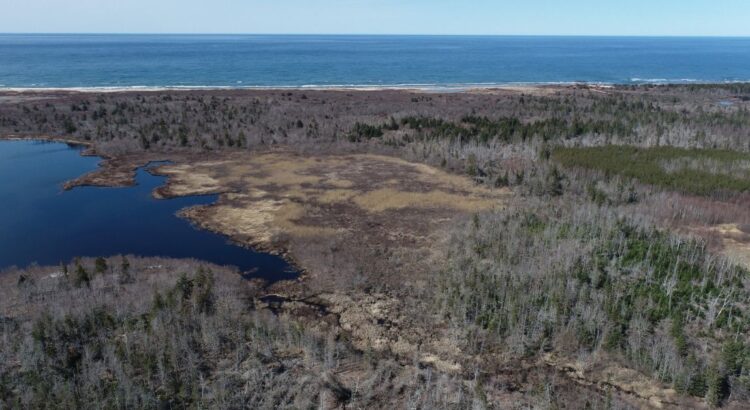
MapleCross – DeRoche Pond Natural Area
This addition to the conserved area complex at Point DeRoche is 200 acres of ecologically significant dunes, wetlands, and forest. It expands on Natural Areas owned by Island Nature Trust, the Province of Prince Edward Island, and the Nature Conservancy of Canada. This region is significant to Island Nature Trust and holds deep historical, cultural, and ecological importance.
Natural Area Map (Work in Progress)
Acquisition and Legal Status
This property was purchased in 2025 from the McCormack Family who owned the land since the 1790s. This acquisition was made possible thanks to funding from:
- The MapleCross Foundation
- The ECHO Foundation
- The Government of Prince Edward Island
- The Government of Canada
The MapleCross – DeRoche Pond Natural Area is currently in the process of being protected under the PEI Natural Areas Protection Act.
Funding for this acquisition was provided by Environment and Climate Change Canada through the Forested Landscape Priority Place under the Pan-Canadian approach to transforming Species at Risk conservation in Canada.

Landscape Context
This new parcel is one of many conserved lands at Point DeRoche. Over 1,600 acres of land has been protected in the region by Island Nature Trust, the Nature Conservancy of Canada, and the Government of Prince Edward Island.
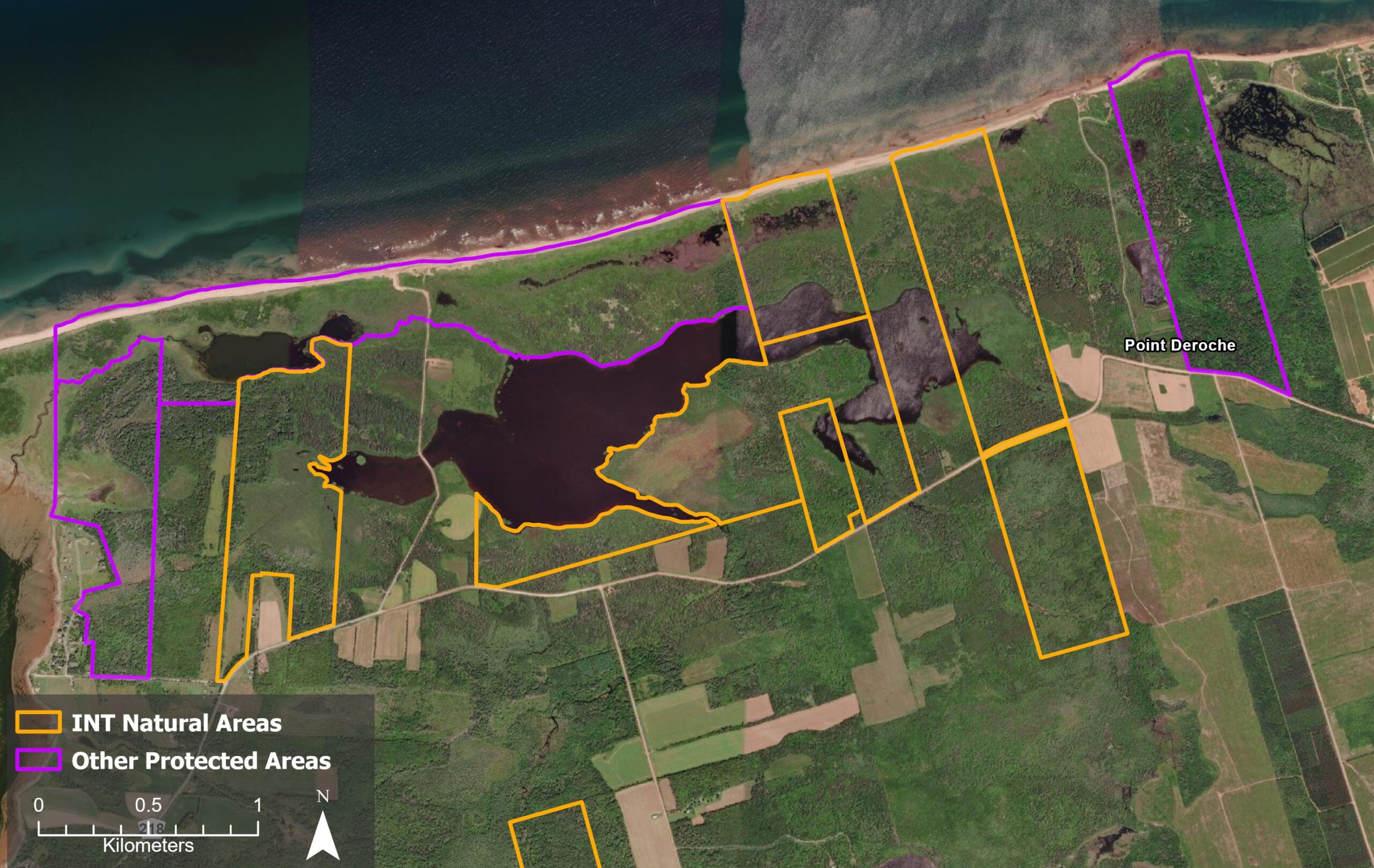
Ecological Description
This parcel contains the easternmost end of the Point DeRoche Pond, a large freshwater pond just south of the Blooming Point beach as well as several tributaries of the DeRoche Pond River. The half of the parcel, which is north of Point DeRoche Road, is characterized by dune, back dune wetlands, the DeRoche Pond, and a serviceberry (Amelanchier spp.) – red maple (Acer rubrum) – white spruce (Picea glauca) – white birch (Betula papryifera) forest. The southern half of the proeprty contains a shrubby bog that is dominated by red spruce (Picea rubens), tamarack (Laxir laricina), common winterberry (Ilex verticillata), leatherleaf (Chamaedaphne calyculata), chokeberry (Aronia melanocarpa), and rhodora (Rhododendron canadense). The southern forest is characterized by early successional species such as red maple, white birch, and trembling aspen (Populus tremuloides). The southern tributary of the DeRoche Pond River has expanded into an open-water pond due to the long-term effects of North American beaver (Castor canadensis) activity.
A habitat suitability model created by the Atlantic Canada Conservation Data Centre habitat suggests that the ecosystems present on this property support the Canada warbler (Cardellina canadensis), a federally listed species at risk in 2025.
Access
This property can be accessed via Point DeRoche Road on the north and south, as well as by water (DeRoche Pond) and along the coast (Blooming Point Beach). There are no trails located on this property, and those visiting should be familiar with bushwhacking and have orienteering supports such as a GPS.
For more information on access to our natural areas, please contact our Land Stewardship Team.
Sark Family Makes Conservation Land Donation
An ecologically important property near Lennox Island First Nation has been donated for conservation by Marilyn and Darcy Sark, of Lennox Island.
The 333-acre property includes 4 kilometres of forested coastline with rocky beaches, saltmarsh, and glacial erratics. The coastal forest is uniquely dominated by white ash and white spruce. Jack pine, a provincially-rare tree, is common throughout the property. This variety of ecosystems supports extensive wildlife habitat, including for federally at-risk species: Canada warbler and Eastern wood-peewee.
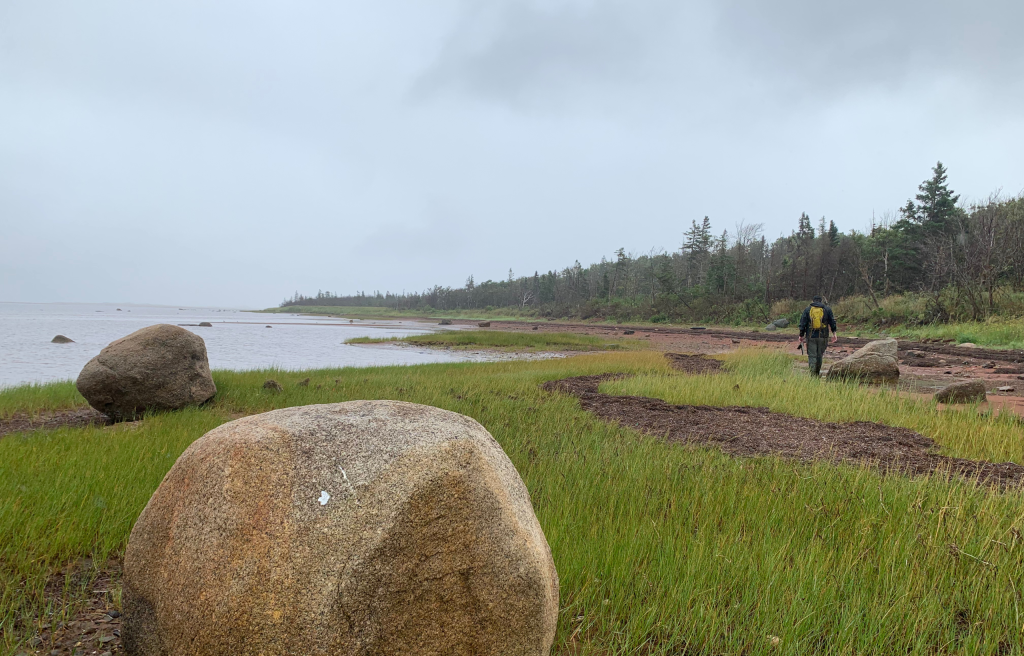
Island Nature Trust and L’nuey are pleased to have collaborated on facilitating and accepting the donation of this significant property.

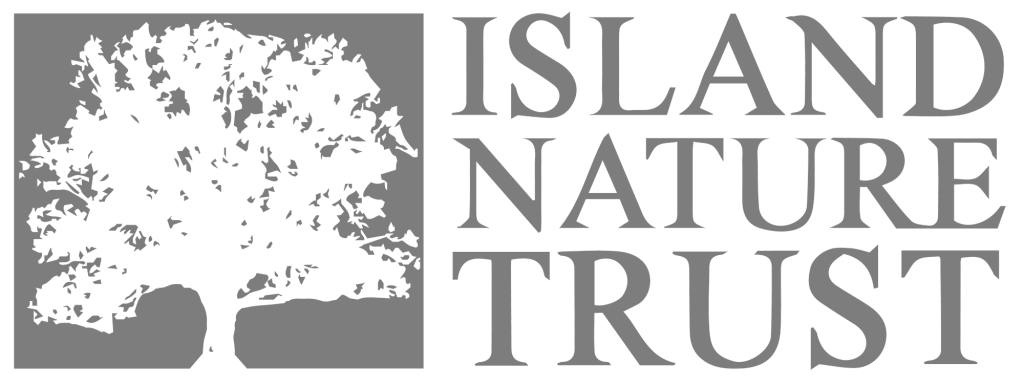
The property will be known as the Chief Jack Sark Memorial Natural Area, in memory of the former Lennox Island First Nation Chief, the late husband of Marilyn Sark, and father of Darcy. “We are proud to be donating this property in Jack’s memory, as he had a great respect for the conservation of nature and the environment. He would be pleased, as it was his wish to eventually donate the property for conservation.” -Marilyn and Darcy Sark
The property will be known as the Chief Jack Sark Memorial Natural Area, in memory of the former Lennox Island First Nation Chief, the late husband of Marilyn Sark, and father of Darcy.
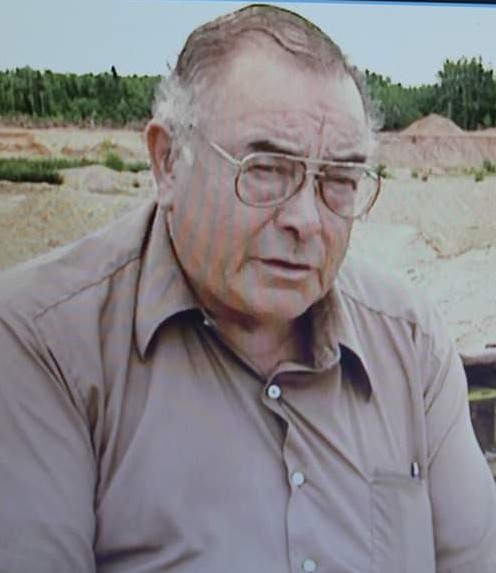
Melissa Cameron, Executive Director of Island Nature Trust shared this:
“We extend our heartfelt gratitude to Marilyn and Darcy Sark for their generous donation of this invaluable coastal land in memory of Chief Jack Sark. The size and ecological significance of this land, including its rare coastal white ash forest, will continue to support biodiversity and conservation for generations to come. We are deeply appreciative of the collaboration with the Sark family and L’nuey, whose partnership has been pivotal in making this donation a reality.”
Ecological Gift Program
The donation was made possible through Canada’s Ecological Gifts Program. Canada’s Ecological Gifts Program provides a way for Canadians with ecologically sensitive land to protect nature and leave a legacy for future generations. Made possible by the terms of the Income Tax Act of Canada (and the Quebec Taxation Act), it offers significant tax benefits to landowners who donate land or a partial interest in land to a qualified recipient. Recipients ensure that the land’s biodiversity and environmental heritage are conserved in perpetuity.

About
Island Nature Trust is a membership-based, non-government, Canadian charity dedicated to land conservation in Prince Edward Island since 1979.
In a race against time, our mission is to preserve and steward forever a network of natural areas and wildlife habitats across PEI and bring together those who care about preserving PEI’s natural legacy for future generations.
We are a key provider of technical, science-based knowledge on land stewardship and wildlife in PEI for landowners, governments, and partner environmental groups.
We provide mentorship and employment opportunities to people committed to land stewardship, conservation research and wildlife monitoring who will continue building on the long tradition of Island Nature Trust as the premiere land trust on the Island.
Visit our website: www.islandnaturetrust.ca
Facebook: www.facebook.com/islandnaturetrust
Instagram: www.instagram.com/islandnaturetrust/
LinkedIn: www.linkedin.com/company/island-nature-trust
Media Contact
Island Nature Trust
Simon Andrea – Land Acquisition Manager
902-892-7513
acquisition@islandnaturetrust.ca
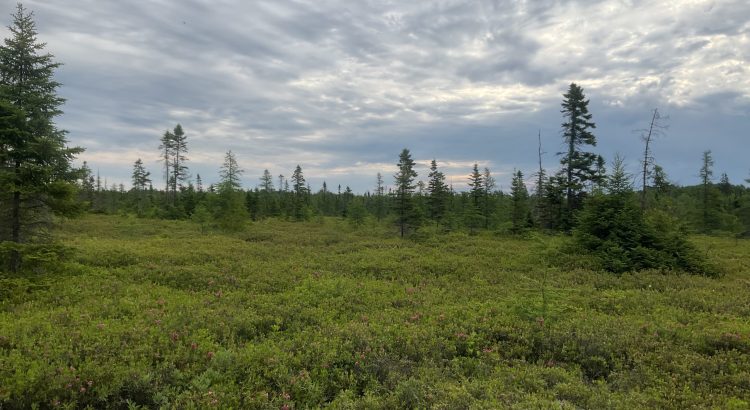
Portage Bog Natural Area Expansion
Island Nature Trust is thrilled to announce the purchase and protection of 240 acres (97 hectares) of ecologically significant bog, salt marsh, and lowland forest that stretches from the Western Road to the Portage River in Prince County. The acquisition of these two properties adds onto the existing 207-acre Portage Bog and Ivan’s Branch Portage Bog Natural Area, now safeguarding a total of 446 acres (180 hectares) of carbon rich peatland forever.
Read more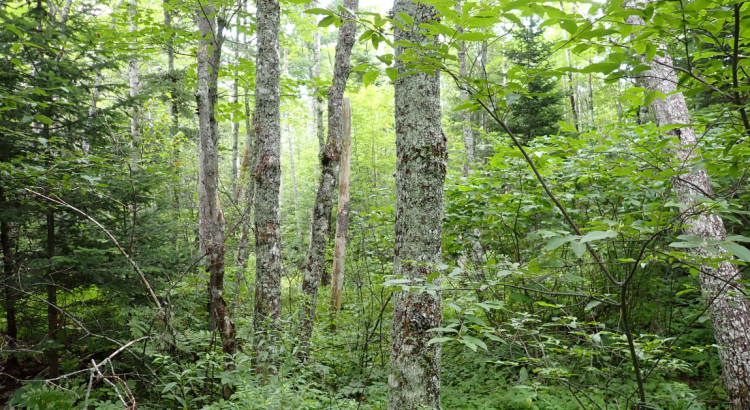
Farmington Woodlands Natural Area (Klondike Road Branch)
This addition to the the Farmington Woodlands Natural Area is a 58.5-acre parcel located in Kings County, Prince Edward Island. The property contains forests dominated by balsam fir, red maple, red pine, white pine, larch and cedar. The eastern portion of the property is bisected by a waterway feeding into the Fortune and Naufrage rivers. The acquisition of this parcel further protects this region of the Island and the Fortune River complex, with the greater Natural Area being 374 acres.
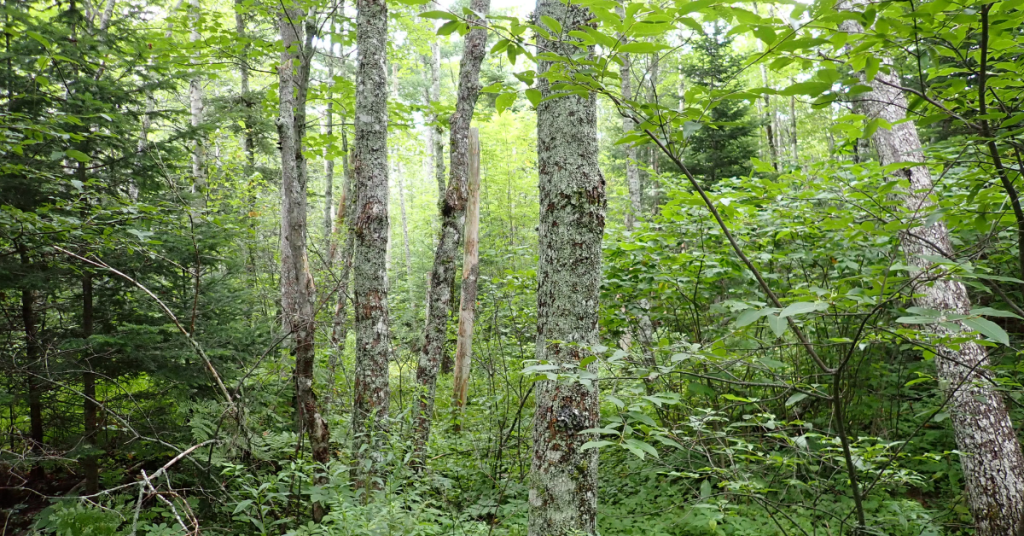
Natural Area Map
Acquisition and Legal Status
This property was split-receipt donation from George Mason and family in March of 2024, where a portion of the land’s value was purchased, and the remainder donated.
George studied Resource and Wildlife Management before shifting to a career as a Professional Accountant. He has remained devoted to conservation on PEI, including on his forested properties in Kings County. George has been INT’s Treasurer on its Board of Directors since 2021, and has also volunteered with the Canadian Wildlife Federation, World Wildlife Fund, and the Trans Canada Trail.
After my son moved to Ontario, I realized he wouldn’t be returning to manage the land. Rather than selling it, I wanted to ensure it remained accessible and protected
George Mason, donor
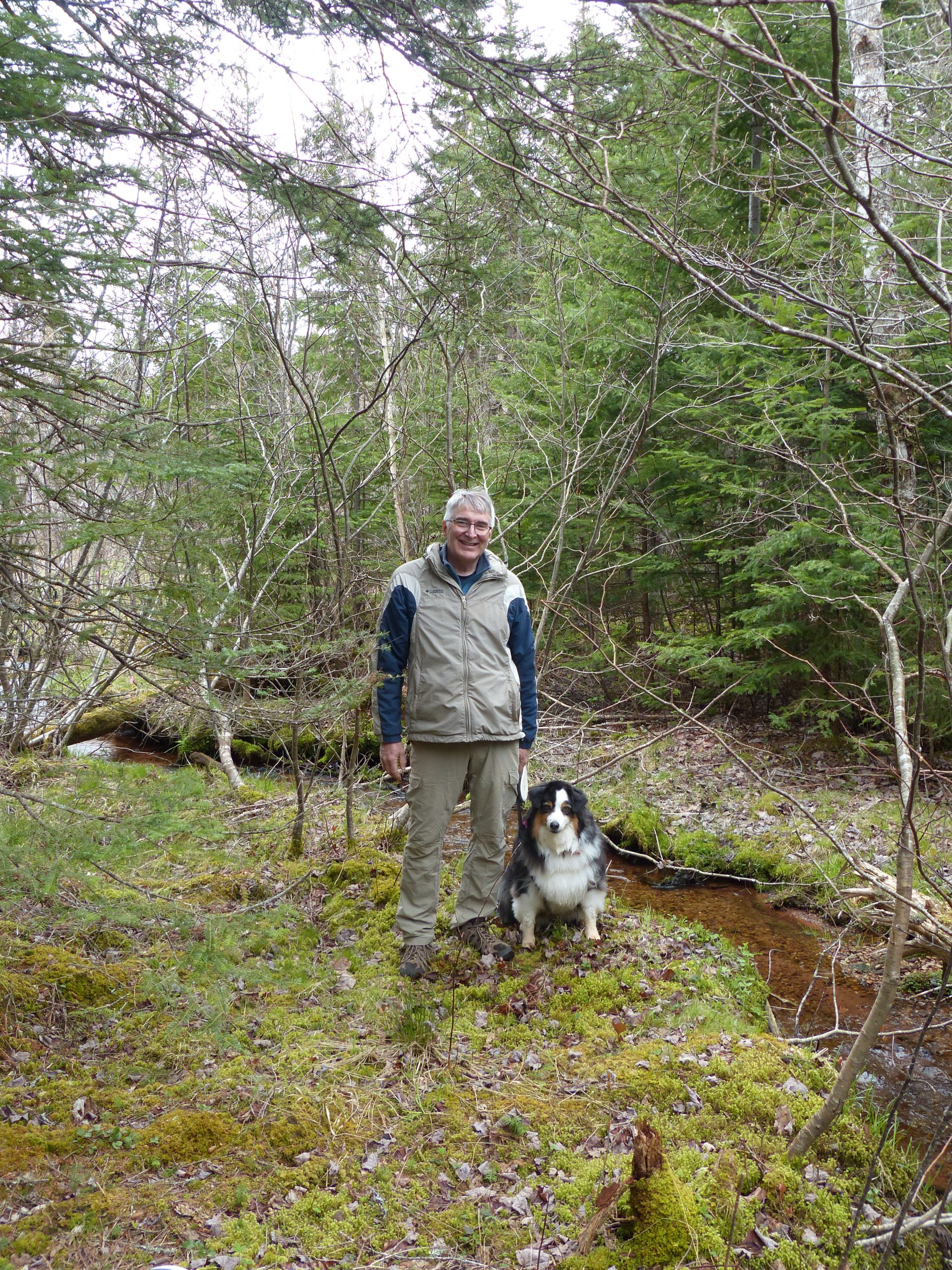
Funding for this acquisition was provided by Environment and Climate Change Canada through the Forested Landscape Priority Place under the Pan-Canadian approach to transforming Species at Risk conservation in Canada.
This partial donation of land was made possible thanks to the Government of Canada’s Ecological Gift Program. This Program provides a way for Canadians with ecologically sensitive land to protect nature and leave a legacy for future generations. Made possible by the terms of the Income Tax Act of Canada and the Quebec Taxation Act, it offers significant tax benefits to landowners who donate land or a partial interest in land to a qualified recipient. Recipients ensure that the land’s biodiversity and environmental heritage are conserved in perpetuity. LEARN MORE

Landscape Context
This parcel of Farmington Woodlands Natural Area is located east of Farmington, near the pre-existing parcels that comprise the Farmington Woodlands Natural Area complex. The acquisition of this property expands on the connectivity of INT and Provincial protected areas throughout the area, specifically extending the protection of waterways associated with the Fortune and Naufrage Rivers. This new acquisition connects the bisected waterway to the east with a large wetland complex owned by Ducks Unlimited.
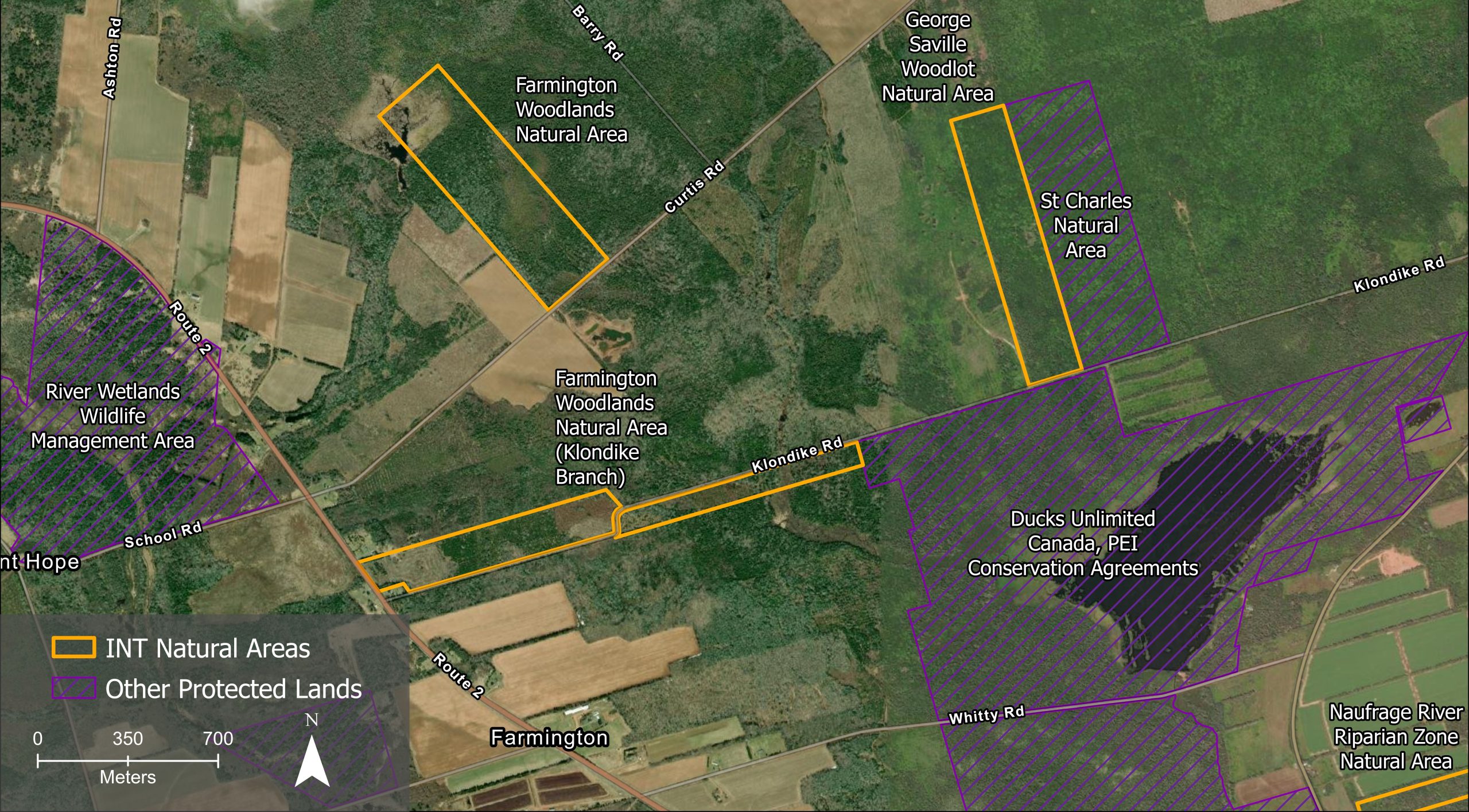
Ecological Description
This property has a history of agriculture and forestry, as much of the Island does, but contains desirable tree species including eastern white cedar, sugar maple, red pine, white pine, American beech, and yellow birch. The riparian forest is more mature and contains larger, seed producing trees. Also along the river is a freshwater marsh containing alders, yellow marsh marigold, and other hydrophytic vegetation.
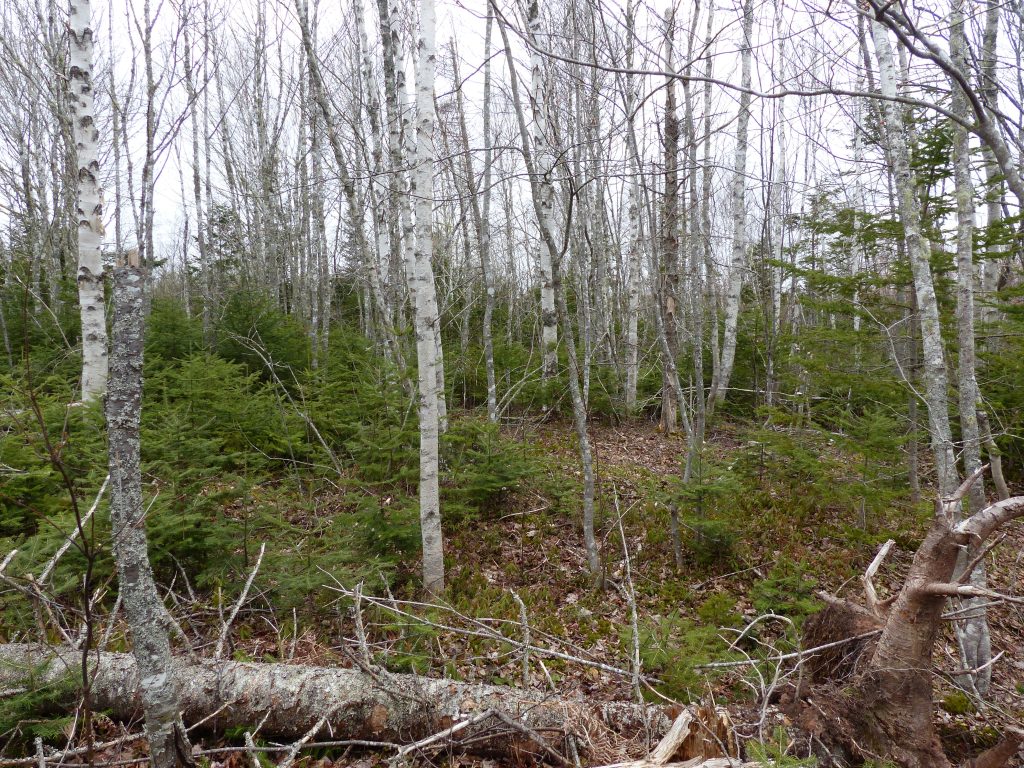
Access
This parcel of Farmington Woodlands Natural Area is accessible by PEI Route 2 to the west and Klondyke Road that runs along the northern and southern boundaries. Klondyke Road is a seasonal, dirt road. This property can be accessed at your own risk. No campfires or overnight camping are allowed on Island Nature Trust Natural Areas.
For more information on access to our natural areas, please contact our Land Stewardship Team.
